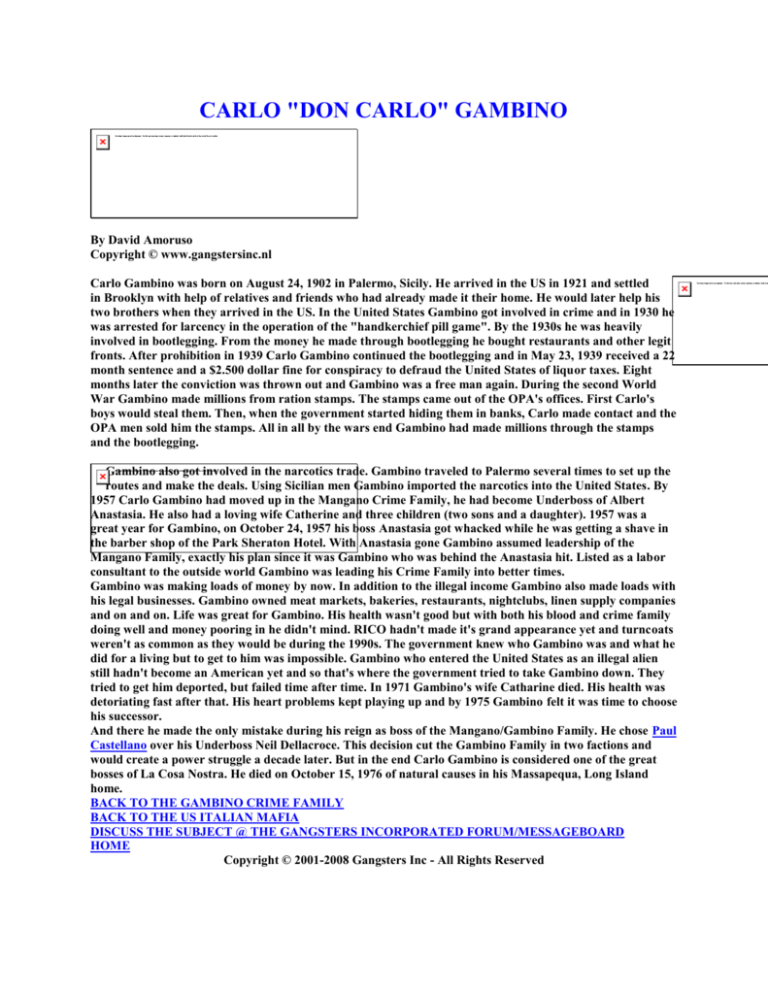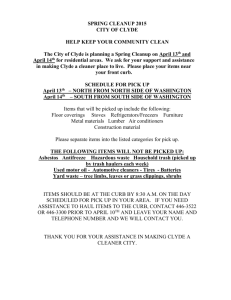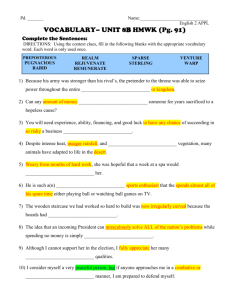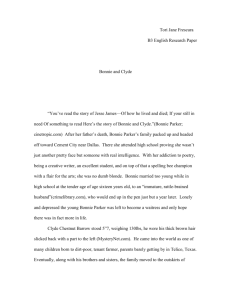
CARLO "DON CARLO" GAMBINO
By David Amoruso
Copyright © www.gangstersinc.nl
Carlo Gambino was born on August 24, 1902 in Palermo, Sicily. He arrived in the US in 1921 and settled
in Brooklyn with help of relatives and friends who had already made it their home. He would later help his
two brothers when they arrived in the US. In the United States Gambino got involved in crime and in 1930 he
was arrested for larcency in the operation of the "handkerchief pill game". By the 1930s he was heavily
involved in bootlegging. From the money he made through bootlegging he bought restaurants and other legit
fronts. After prohibition in 1939 Carlo Gambino continued the bootlegging and in May 23, 1939 received a 22
month sentence and a $2.500 dollar fine for conspiracy to defraud the United States of liquor taxes. Eight
months later the conviction was thrown out and Gambino was a free man again. During the second World
War Gambino made millions from ration stamps. The stamps came out of the OPA's offices. First Carlo's
boys would steal them. Then, when the government started hiding them in banks, Carlo made contact and the
OPA men sold him the stamps. All in all by the wars end Gambino had made millions through the stamps
and the bootlegging.
Gambino also got involved in the narcotics trade. Gambino traveled to Palermo several times to set up the
routes and make the deals. Using Sicilian men Gambino imported the narcotics into the United States. By
1957 Carlo Gambino had moved up in the Mangano Crime Family, he had become Underboss of Albert
Anastasia. He also had a loving wife Catherine and three children (two sons and a daughter). 1957 was a
great year for Gambino, on October 24, 1957 his boss Anastasia got whacked while he was getting a shave in
the barber shop of the Park Sheraton Hotel. With Anastasia gone Gambino assumed leadership of the
Mangano Family, exactly his plan since it was Gambino who was behind the Anastasia hit. Listed as a labor
consultant to the outside world Gambino was leading his Crime Family into better times.
Gambino was making loads of money by now. In addition to the illegal income Gambino also made loads with
his legal businesses. Gambino owned meat markets, bakeries, restaurants, nightclubs, linen supply companies
and on and on. Life was great for Gambino. His health wasn't good but with both his blood and crime family
doing well and money pooring in he didn't mind. RICO hadn't made it's grand appearance yet and turncoats
weren't as common as they would be during the 1990s. The government knew who Gambino was and what he
did for a living but to get to him was impossible. Gambino who entered the United States as an illegal alien
still hadn't become an American yet and so that's where the government tried to take Gambino down. They
tried to get him deported, but failed time after time. In 1971 Gambino's wife Catharine died. His health was
detoriating fast after that. His heart problems kept playing up and by 1975 Gambino felt it was time to choose
his successor.
And there he made the only mistake during his reign as boss of the Mangano/Gambino Family. He chose Paul
Castellano over his Underboss Neil Dellacroce. This decision cut the Gambino Family in two factions and
would create a power struggle a decade later. But in the end Carlo Gambino is considered one of the great
bosses of La Cosa Nostra. He died on October 15, 1976 of natural causes in his Massapequa, Long Island
home.
BACK TO THE GAMBINO CRIME FAMILY
BACK TO THE US ITALIAN MAFIA
DISCUSS THE SUBJECT @ THE GANGSTERS INCORPORATED FORUM/MESSAGEBOARD
HOME
Copyright © 2001-2008 Gangsters Inc - All Rights Reserved
News My Movies DVD New Releases IMDbTV Message Boards Showtimes & Tickets IMDbPro IMDb Resume
Login | Register
Home | Top Movies | Photos | Independent Film | GameBase | Browse | Help
search
go
more | tips
IMDb > Albert Anastasia > Biography
/rg/action-box-name/no-headshot/http://resume.imdb.com//rg/action-box-name/noheadshot/http://resume.imdb.com/add/change photo
Add Resume Shop at Amazon
for Albert Anastasia products
Quicklinks
Top Links
biographyby votesawardsNewsDeskmessage board
Filmographies
categorizedby typeby yearby ratingsby votesby TV series awards titles for saleby genre by keyword power search
credited with tv schedule
Biographical
biography other works publicity contact photo gallery resume NewsDesk message board
External Links
official sites miscellaneous photographs sound clips video clips
Biography for
Albert Anastasia More at IMDbPro »
advertisement
Date of Birth
26 February 1902, Calabria, Italy
Date of Death
25 October 1957, New York, New York, USA (homicide)
Nickname
The Mad Hatter
The Lord High Executioner
Mini Biography
Albert Anastasia was born February 26, 1903, in Calabria, Italy, famous for its hams and the 'ndrangheta, which was
every bit as vicious as the Sicilian Mafia. He was brought to America as a child along with his eight brothers. When
he was starting in organized crime, he helped Salvatore Lucania, who later became known as Lucky Luciano,
murder Giuseppe Masseria (aka "Joe The Boss" or "The Chinese"). When the "Boss of Bosses", Salvatore
Maranzano, was murdered by Luciano, La Cosa Nostra was divided into different families known as The
Commission. The bosses of the family Anastasia belonged to were brothers Vincent Mangano and Philip Mangano.
Soon after, Anastasia started to lust for power. As the underboss, he and Vincent Mangano often fought physically.
Anastasia, being younger, would usually win. Anastasia's old friend and boss of the Luciano family, Frank Costello,
soon found himself in a pickle when his partner, Vito Genovese, returned from Italy after nine years. Costello
needed Anastasia's help but couldn't do a thing unless he had an entire family behind him. Costello and Anastasia
soon came up with the idea of killing the Manganos. On April 19, 1951, one of the most mysterious murders in
Mafia history occurred. The body of Phil Mangano was found in a marshland with three bullets in the back of his
head and two in each cheek. When the police tried to contact his brother, they couldn't reach him. When Vincent
didn't show up at his brother's funeral, the police and Mafia bosses assumed that Vincent had been murdered as well.
Frank Costello stuck up for Anastasia when the families had a sit-down to discuss the murder, saying that the
Manganos were planning to kill him. Anastasia was now the boss of the former Mangano family.
After he became the boss, he and his younger brother, Anthony Anastasia (aka "Tough Tony") - who changed his
last name to Anastasio, most likely in order to avoid public connections with his brother--ran the Brooklyn
waterfronts for over a decade. When Lucky Luciano was arrested, Albert and his brother Tony sabotaged a huge
French ship moored at a pier and then offered protection to the Navy in exchange for Luciano's release. A
compromise was reached in which Luciano was sent to a minimum security prison. Under Luciano's order,
Anastasia became the head of the Mafia's enforcement arm, known as Murder Inc. This group of killers was
responsible for an estimated 700 to 1000 murders. The large number was due to Anastasia's hot temper and love for
violence. When he saw a local shop owner, Arnold Schuster, who had recognized notorious bank robber Willie
Sutton on the street and notified the police, who then arrested Sutton, he immediately ordered that Schuster be
killed.
Schuster's death enraged the public as well as the other Mafia bosses. A few years later, Luciano was deported to
Italy, and the Italian government then exiled him to Sicility where, during WW II, he and the local Mafia ingratiated
themselves with US forces after the invasion of Sicily by identifying and helping capture "fascists" and "fascist
sympathizers" (most of whom, strangely enough, turned out to be Luciano's competitors in his various criminal
enterprises).
When Luciano left, Genovese wanted more and more power, but the Frank Costello, Albert Anastasia and Frank
Scalise, Anastasia's underboss. Genovese was growing irritated with Albert because of the many unjustified deaths
committed by Albert's crew, which went against the Mafia's laws. He was also selling memberships for his family
for a few thousand dollars apiece. Genovese hired future boss Vincent "The Chin" Gigante to kill Costello. In 1957
Costello was shot in the head by Gigante, but in a stroke of luck the bullet only grazed is head and Costello
survived. That incident persuaded Costello to semi-retire from his life of crime. By tradition, an underboss was
murdered before the boss, in order to prevent retaliation. Anastasia's strongest ally, Joe Adonis, was suddenly
deported to Italy. His underboss, Frank Scalise, was murdered one day when he went out to buy some fruit.
One of Anastasia's capos, Carlo Gambino, who later became the most powerful Mafia boss in US history, was
secretly meeting with Vito Genovese to discuss the planned killing of Anastasia. Genovese promised that Gambino
would be named the boss of the family if he killed Anastasia. Carlo could not refuse. Anastasia was about the same
age, so by the time Carlo became boss, he wouldn't have much longer to live. Gambino consulted Joe Profaci,
another Mafia boss, and the two hired the Gallo brothers, including the infamous Crazy Joe Gallo, to kill Anastasia.
Anastasia's favorite barber shop was the Park Sheraton. He loved getting his beard trimmed and the feel of the towel
on his face. When the barber put the towel on Albert's face, two of the three Gallo brothers rushed in and fired five
shots into Anastasia, blasting him out of the barber's chair. The New York criminal and law enforcement
communities were relieved that The Lord High Executioner had been taken out. Some people, however, were not
happy with it, and one of the most troubled was future boss John Gotti. Albert Anastasia had been his role model
and, at the time, his one hope of getting in the family. Albert's brother Tough Tony continued to control the
waterfronts after Albert's death.
IMDb Mini Biography By: Rzarector740
Mini Biography
In the early 1930s, Jewish-American labor racketeer Louis Buchalter and Italian-American gangsters Charles
'Lucky' Luciano and Johnny Torrio, the former boss of the Chicago Outfit and mentor of New York native Al
Capone, allied themselves together. Luciano's Jewish-American associates Bugsy Siegel and Meyer Lansky formed
"Murder, Inc.", a group of button men who would be on call 24/7 to handle any "problems" that afflicted la Cosa
Nostra. Murder, Inc., originally was a group of mostly Jewish-American hit-men from the Brownsville section of
Brooklyn. Operating out of the back of a candy store, they proved highly effective in maintaining mob discipline
and eliminating problems such as eye-witnesses and recalcitrant marks. The band of brothers-in-arms eventually
were used to fulfill most murder "contracts." As Siegel and Lansky (the latter widely regarded as the financial brains
of organized crime in America) had moved on to other, larger pastures, control over Murder Inc. was ceded to
Buchalter and Albert Anastasia, who was known in underworld circles as "The Mad Hatter" and, more ominously,
"The Lord High Executioner".
The group of killers was credited with carrying out many contract killings throughout the country, including the
slaying of Jewish-American bootlegger and northern New York State crime boss Dutch Schultz at the Palace
Chophouse, on October 23, 1935. The Schultz killing was a major event for Anastassia and Murder Inc., signaling
their arrival as a major force in organized crime. (Louis Amberg was murdered by the group the very same day.)
Murder Inc. may have been responsible for as many as a thousand contract killings nationwide, carried out by such
button-man as future canary Abe 'Kid Twist' Reles (played by Peter Falk in the movie Murder, Inc. (1960), which
brought him a Best Supporting Actor Oscar nod) and Frankie Carbo, who later established himself as "The Czar of
Boxing". (The Mafia, via Anastasia, Carbo and Carbo's partner, Mafiosi Blinky Palermo, took over the sport of
boxing and manipulated the odds and fixed the fights according to abet their bookie operations. Carbo ran New York
boxing, which WAS boxing until the 1960s - when he and Palermo were convicted and sentenced to prison - from
his New York bookie operation.) The Federal Bureau of Investigation (whose director J. Edgar Hoover denied the
existence of the Mafia until 1957, possibly as he may have been open to being blackmailed due to his alleged
homosexual proclivities), managed to hook Buchalter on a narcotics trafficking charge in the mid-1930s, after he
had successfully avoided arrest due to the bribing of federal judges and the Mafia's political connections. (Until the
Nixon Administration, the Mafia was associated with the Democratic Party. Gore Vidal, in one of his essays,
estimated that organized crime provided approximately 15% of the Democratic Party's budget in the 1960s. In
mobbed-up cities like Chicago, a Democratic Party ward headquarters was synonymous with local Mafia
headquarters/clubhouse.) Murder, Inc. was also investigated by New York City special prosecutor Thomas E.
Dewey, as one of the many targets of the "Syndicate" that Dewey was dedicated to obliterating. Fearing the
implacable Dewey (who would use his fame as the country's most successful crime-buster, the man who put away
Lucky Luciano and other organized crime bigwigs, to the state house in Albany and two bids for President as the
Republican nominee in 1944 and '48), Buchalter surrendered to the federal authorities on a narcotics trafficking
charge, stipulating that he would not be turned over to Dewey. Convicted, he was sent to Leavenworth for 14 years,
later extended to 30 years on account of Lepke's involvement in union racketeering. From his jail cell, he was still
able to co-control Murder, Inc. and his other fiefdoms.
Anastassia and his now-incarcerated partner Buchalter became the focus of an investigation by New York City
District Attorney William O'Dwyer, who planned to run for mayor. Targeting Anastassia's Murder, Inc. underlings,
O'Dwyer had "Kid Twist" Reles picked up for murder. Facing a date with "Old Sparky", the electric chair at the
State Penitentiary in Ossining (the fabled "Sing Sing"), The Kid turned informant for New York State in 1940 and
fingered Buchalter for four murders. Anastassia escaped prosecution, but The Kid informed the Grand Jury that he
overheard Lepke ordering the 1936 murder of Brooklyn candy store owner Joseph Rosen, a former garment industry
trucker. The trial of Murder, Inc. co-boss was scheduled for November 12, 1941, and Lepke was transported from
Leavenworth to New York City to stand trial. Anastassia, fearful for his own skin lest Kid Twist spill the beans on
the witness stand and implicate The Mad Hatter, put a $100,000 bounty on his head. On the morning of the trial,
Reles - who was being by guarded by six police detectives in Room 623 of the Half Moon Hotel on Coney Island did spill his guts, after falling from the sixth floor window of the hotel to his death. The detectives said it was a
suicide, but the angle of trajectory of Kid Twist's body indicates that had been pushed or thrown out of the window.
It was widely believed that Mafia boss Frank Costello, who oversaw organized crime as the heir apparent of
incarcerated "Capo di tutti capi" ("Boss of Bosses") Luckly Luciano, "touched" the detectives guarding The Kid,
bribing them to ensure that he would never get to the courtroom to testify. What is known is that Kid Twist, the
would-be "stool pigeon", became known after his death as "The canary who sang, but couldn't fly."
Lepke had run out of luck, however. O'Dwyer obtained a conviction based on the testimony of another Murder, Inc.
turncoat, Albert Tannenbaum. In December 1941, the jury convicted Buchalter of first degree murder, and Buchalter
was sentenced to death by electrocution in the electric chair. In October 1942, the conviction and sentence was
upheld by the New York State Court of Appeals, and New York City requested that Buchalter be turned over by the
federal government for execution of sentence. Lepke managed to put off execution of sentence for another year and
a half, but the 47-year old Buchalter was finally executed at Sing Sing on March 4, 1944.
After his conviction, Albert Anastassia became sole boss of Murder, Inc. However, with the post-World War II
deportation of Lucky Luciano, he moved up in the Mafia ranks, eventually taking over the Magano Family (later
known as the Gambino Family), after the family don, Anastassia's nemesis, Vincent Mangano, disappeared.
Although it was unusual for an out-and-out killer like Anastassia to become a boss, he was confirmed as head of the
Magano Family by the Commission (the mob's ruling body) with Frank Costello's support, but only after
successfully arguing that he had had Mangano hit in self-defense as the don was determined to kill him. Costello
wanted Anastassia as a don in order to counter the ambitions of Vito Genovese, the real-life model for Don Corleone
in The Godfather (1972), who believed it was he and not Costello who should have assumed the power of Luciano's
family after unlucky Lucky had been incarcerated.
As a boss, Anastassia's brutal ways eventually undermined him. In 1952, Anastasia violated a cardinal rule of the
Mafia against killing outsiders, ordering the murder of a Arnold Schuster, a young tailor's assistant, after seeing
Schuster on television taking credit for fingering fugitive bank robber Willie Sutton (the man who said he robbed
banks as "That's where the money is"). In a rage, Anastasia ordered the hit, telling his men, "I can't stand squealers!
Hit that guy!"
The murder of an outsider opened up the Mafia to unwanted public scrutiny. Genovese used the incident to begin
undermining Anastassia and Costello, who had refused to discipline The Mad Hatter for his behavior. However,
Genovese's power was limited by the antagonism between himself and Meyer Lansky (the inspiration for character
Hyman Roth in The Godfather: Part II (1974). In time, though, Anastassia' own ambitions led to the loss of his life.
Anastassia alienated Lansky, one of the true Mafia kingpins, when Anastassia horned in on Lansky's highly lucrative
Cuban gambling operations without permission. An enraged Lansky gave Genovese permission to eliminate the
interloper, which Genovese arranged as part of his greater plan to retire Frank Costello (who was considered "the
Prime Minister of the Mob" due to his central position from his connections with every ranking power in organized
crime) and establish himself as "Capo di tutti capi" ("Boss of Bosses"), the first since Lucky Luciano was jailed for
pandering by Tom Dewey back in 1936.
On the morning of October 25, 1957, Anastasia was assassinated in the barbershop of the Park Sheraton Hotel (now
the Park Central Hotel), on 56th Street and 7th Avenue) in New York City by two men wearing scarves. Anastasia's
bodyguard was not on the scene, having decided to go for a walk after parking the boss's car in an underground
garage. After absorbing a fusillade of shots, the don allegedly still had enough life in him to go after his attackers.
However, they were but the reflections of the hit-men in the barbershop windows, and he died on the floor that
morning. The Anastasia hit was carried out with an efficiency of which the Lord High Executioner himself surely
would have approved, had he not been its victim.
IMDb Mini Biography By: Jon C. Hopwood
Sponsored Links (What's This?)
Volunteer Trip to Kenya
www.IntrepidTravel.com/MAD * Teach Children in Kenya Give Back to the Community.
Gov. Stimulus Grants
www.GovGrantsCenter.org * Grants For Business, Education & Housing Needs. Apply Now!
Environmental Degree
www.APUS.edu/Environmental * 100% online environmental science degrees. Work towards yours today.
Copyright © 1990-2009 IMDb.com, Inc.
Terms and Privacy Policy under which this service is provided to you.
An http://www.amazon.com/exec/obidos/redirect-home/internetmoviedat
http://www.amazon.com/exec/obidos/redirect-home/internetmoviedatcompany. Advertise on IMDb. License our
content.
FBI History
Famous Cases
Bonnie and Clyde
Clyde Champion Barrow and his companion, Bonnie Parker, were shot to death by officers in an ambush near
Sailes, Bienville Parish, Louisiana, on May 23, 1934, after one of the most colorful and spectacular manhunts the
Nation had seen up to that time.
Barrow was suspected of numerous killings and was wanted for murder, robbery, and state charges of kidnaping.
Clyde Champion Barrow Bonnie Parker
The Federal Bureau of Investigation (FBI), then called the Bureau of Investigation, became interested in Barrow and
his paramour late in December, 1932, through a singular bit of evidence. A Ford automobile, which had been stolen
in Pawhuska, Oklahoma, was found abandoned near Jackson, Michigan in September of that year. At Pawhuska, it
was learned another Ford car had been abandoned there which had been stolen in Illinois. A search of this car
revealed it had been occupied by a man and a woman, indicated by abandoned articles therein. In this car was found
a prescription bottle, which led Special Agents to a drug store in Nacogdoches, Texas, where investigation disclosed
the woman for whom the prescription had been filled was Clyde Barrow's aunt.
Further investigation revealed that the woman who obtained the prescription had been visited recently by Clyde
Barrow, Bonnie Parker, and Clyde's brother, L. C. Barrow. It also was learned that these three were driving a Ford
car, identified as the one stolen in Illinois. It was further shown that L. C. Barrow had secured the empty
prescription bottle from a son of the woman who had originally obtained it.
On May 20, 1933, the United States Commissioner at Dallas, Texas, issued a warrant against Clyde Barrow and
Bonnie Parker, charging them with the interstate transportation, from Dallas to Oklahoma, of the automobile stolen
in Illinois. The FBI then started its hunt for this elusive pair.
Background
Bonnie and Clyde met in Texas in January, 1930. At the time, Bonnie was 19 and married to an imprisoned
murderer; Clyde was 21 and unmarried. Soon after, he was arrested for a burglary and sent to jail. He escaped, using
a gun Bonnie had smuggled to him, was recaptured, and was sent back to prison. Clyde was paroled in February,
1932, rejoined Bonnie, and resumed a life of crime.
In addition to the automobile theft charge, Bonnie and Clyde were suspects in other crimes. At the time they were
killed in 1934, they were believed to have committed 13 murders and several robberies and burglaries. Barrow, for
example, was suspected of murdering two police officers at Joplin, Missouri, and kidnaping a man and a woman in
rural Louisiana. He released them near Waldo, Texas. Numerous sightings followed, linking this pair with bank
robberies and automobile thefts. Clyde allegedly murdered a man at Hillsboro, Texas; committed robberies at Lufkin
and Dallas, Texas; murdered one sheriff and wounded another at Stringtown, Oklahoma; kidnaped a deputy at
Carlsbad, New Mexico; stole an automobile at Victoria, Texas; attempted to murder a deputy at Wharton, Texas;
committed murder and robbery at Abilene and Sherman, Texas; committed murder at Dallas, Texas; abducted a
sheriff and the chief of police at Wellington, Texas; and committed murder at Joplin and Columbia, Missouri.
The Crime Spree Begins
Later in 1932, Bonnie and Clyde began traveling with Raymond Hamilton, a young gunman. Hamilton left them
several months later, and was replaced by William Daniel Jones in November, 1932.
Ivan M. "Buck" Barrow, brother of Clyde, was released from the Texas State Prison on March 23, 1933, having
been granted a full pardon by the Governor. He quickly joined Clyde, bringing his wife, Blanche, so the group now
numbered five persons. This gang embarked upon a series of bold robberies which made headlines across the
country. They escaped capture in various encounters with the law. However, their activities made law enforcement
efforts to apprehend them even more intense. During a shootout with police in Iowa on July 29, 1933, Buck Barrow
was fatally wounded and Blanche was captured. Jones, who was frequently mistaken for "Pretty Boy" Floyd, was
captured in November, 1933, at Houston, Texas, by the sheriff's office. Bonnie and Clyde went on together.
Bonnie and Clyde's identification order
On November 22, 1933, a trap was set by the Dallas, Texas, sheriff and his deputies in an attempt to capture Bonnie
and Clyde near Grand Prairie, Texas, but the couple escaped the officer's gunfire. They held up an attorney on the
highway and took his car, which they abandoned at Miami, Oklahoma. On December 21, 1933, Bonnie and Clyde
held up and robbed a citizen at Shreveport, Louisiana.
On January 16, 1934, five prisoners, including the notorious Raymond Hamilton (who was serving sentences
totaling more than 200 years), were liberated from the Eastham State Prison Farm at Waldo, Texas, by Clyde
Barrow, accompanied by Bonnie Parker. Two guards were shot by the escaping prisoners with automatic pistols,
which had been previously concealed in a ditch by Barrow. As the prisoners ran, Barrow covered their retreat with
bursts of machine-gun fire. Among the escapees was Henry Methvin of Louisiana.
The Last Months
On April 1, 1934, Bonnie and Clyde encountered two young highway patrolmen near Grapevine, Texas. Before the
officers could draw their guns, they were shot. On April 6, 1934, a constable at Miami, Oklahoma, fell mortally
wounded by Bonnie and Clyde, who also abducted a police chief, whom they wounded.
The FBI had jurisdiction solely on the charge of transporting a stolen automobile, although the activities of the
Bureau Agents were vigorous and ceaseless. Every clue was followed. "Wanted notices" furnishing fingerprints,
photograph, description, criminal record, and other data were distributed to all officers. The Agents followed the
trail through many states and into various haunts of the Barrow gang, particularly Louisiana. The association with
Henry Methvin and the Methvin family of Louisiana was discovered by FBI Agents and they found that Bonnie and
Clyde had been driving a car stolen in New Orleans.
On April 13, 1934, an FBI Agent, through investigation in the vicinity of Ruston, Louisiana, obtained information
which definitely placed Bonnie and Clyde in a remote section southwest of that community. The home of the
Methvins was not far away and the Agent learned of visits there by Bonnie and Clyde. Special Agents in Texas had
learned that Clyde and his companion had been traveling from Texas to Louisiana, sometimes accompanied by
Henry Methvin.
The FBI and local law enforcement authorities in Louisiana and Texas concentrated on apprehending Bonnie and
Clyde, whom they strongly believed to be in the area. It was learned that Bonnie and Clyde, with some of the
Methvins, had staged a party at Black Lake, Louisiana, on the night of May 21, 1934, and were due to return to the
area two days later.
Before dawn on May 23, 1934, a posse composed of police officers from Louisiana and Texas, including Texas
Ranger Frank Hamer, concealed themselves in bushes along the highway near Sailes, Louisiana. In the early
daylight, Bonnie and Clyde appeared in an automobile and when they attempted to drive away, the officers opened
fire. Bonnie and Clyde were killed instantly.
For more information:
FBI 100 story
FBI case records
FBI History
Accessibility | eRulemaking | Freedom of Information Act/Privacy | Legal Notices | Legal Policies and Disclaimers |
Links
Privacy Policy | USA.gov | White House
FBI.gov is an official site of the U.S. Federal Government, U.S. Department of Justice.
truTV: Not Reality. Actuality.
By Allan May
The Bank Robber
Jimmy Keating
In Paul Maccabe's well-researched gem, John Dillinger Slept Here: A Crook's Tour of Crime and Corruption in St. Paul
1920-1936, he discusses Kelly's first bank robbery after leaving Leavenworth. On July 15, 1930, Keating and Holden
showed their gratefulness to Kelly for his help in their escape from Leavenworth by inviting him to participate in robbing
the Bank of Willmar, Minnesota. Willmar is a small town located 100 miles to the west of St. Paul. Included among the
bank robbers were Harvey Bailey, Verne Miller, and Sammy Silverman. The bandits escaped with an estimated $70,000,
but it was not a clean robbery. The head of Minnesota's Bureau of Criminal Activity claimed, "I can't remember a holdup in
the history of the state since the raids of the Younger Brothers and Jesse James gangs which compares to the one at Willmar
for daring and cold-blooded disregard of human life."
During the robbery a cashier was pistol-whipped. When a group of onlookers formed outside the bank, one of the gunmen
unleashed a burst from his tommy gun into the crowd, wounding two women.
Verne Miller
On August 14, while authorities were still investigating the robbery, Sammy Silverman and two associates from Kansas
City were found slaughtered in a lover's lane section near Wildwood Park in Minnesota. During a prison interview in 1934,
Kelly claimed Verne Miller had committed the murders after Silverman had "doublecrossed him." Miller, at the time of
Kelly's confession, was already dead.
Kelly continued to participate in other bank robberies. In September 1930, he helped rob a bank in Ottumwa, Iowa with a
group of bandits including Holden, Keating, Bailey, Miller, Fred Barker and Larry DeVol. On April 8, 1931 Bailey, Nash
and Miller headed a group of robbers that took $40,000 from the Central State Bank of Sherman, Texas. Kelly met the men
near the Louisiana border in a second getaway car. During this time Kelly and his wife were living at the home of Kathryn's
former husband, Charlie Thorne, in Fort Worth.
Kelly became partners with Albert L. Bates sometime in 1932. Bates, who used a variety of aliases, had an arrest record
dating back to March 1916 when he was convicted of burglary and sentenced from one to fifteen years in the state
penitentiary at Carson City, Nevada. Paroled a year and a half later, his next sentence was a six-month stretch for petty theft
in Salt Lake City. In August 1921, Bates received another sentence for burglary in the Utah State Penitentiary. He escaped
in October 1926, but less than seven months later he was serving a three to five year burglary sentence in Colorado. After
his release in July 1930, Bates made his way to the mid-west and spent 30 days in jail on a minor charge in Michigan. At
one time, Denver police considered him a suspect in the murder of two of his accomplices.
How Kelly and Bates met is unknown, but the two would work together for the next year. In September 1932, the two men,
along with Eddie Bentz, traveled all the way to Colfax, Washington, near the eastern edge of the state. Here Kelly would
enjoy his biggest payday as a bank robber. On the 21st the men robbed the First Trust & Savings Bank of Colfax of
$77,000. Shortly afterward police raided the Kellys' home in Fort Worth, only to find the couple had fled. Eddie Bentz was
soon captured in a Dallas post office. He admitted to knowing Kelly and Bates, and that they had a hideout somewhere on a
Texas ranch, but he denied any involvement in the Colfax robbery. When Bentz was able to make bail, he fled the state.
Kelly's last known bank robbery occurred on November 30, 1932. Kelly, Bates and a Chicago hoodlum, Eddie Doll, robbed
the Citizen's State Bank of Tupelo, Mississippi of $38,000. During this bank holdup, Kelly carried a .38-caliber revolver
instead of his trademark Thompson sub-machinegun. After the robbery the bank's chief teller would say of Kelly, "He was
the kind of guy that, if you looked at him, you would never thought he was a bank robber."
As in many bank robberies during this time, "Pretty Boy" Floyd received credit for the Tupelo holdup. A letter was mailed
to the local newspaper soon afterward, allegedly signed by "Charles Floyd." The famed bank robber denied involvement in
the robbery.
Barnes doesn't mention the names of Kelly's accomplices, other than Bates, during his bank robbery career. He claims
though that, "When not operating with his own gang, George was one of the chief gunmen hired by other gangsters
throughout the country and became second only to Verne Miller in notoriety."
In describing his father's personal habits, Barnes writes, "George purchased a completely new wardrobe — beautifully
tailored suits with fashionable vests and hand made English shoes, silk ties and shirts. His toilet was exacting. His brown
hair, now with a sprinkling of grey, was always meticulously groomed, and his moustache, clipped to perfection, completed
the picture of a well-to-do businessman or banker."
Bruce Barnes claims Kelly "felt superior" to the bank robbers he befriended in Leavenworth, but "recognized their
accomplishments." When Kelly left his bootlegging career behind to pursue robbing banks, Barnes tells us, "It wasn't only
the money that appealed to him. The picture of himself going into a bank, holding a gun and knowing that he had power
over those he was robbing appealed to him. He knew that when he was through, he would prove himself better than those
who were teaching him the rudiments of the trade."
Barnes wrongfully comments that Kelly enjoyed hearing his name mentioned "in the same tone" as people like John
Dillinger at the time. By the time Kelly's bank robbing career was over and he had been arrested in Memphis, Dillinger's
career was still in its infancy.
Barnes also writes that Kelly robbed banks in Kansas City, Chicago, Denver, and parts of Texas and Mississippi. He claims
that Kathryn not only helped in the planning of these robberies, but that she dressed like a man and participated as an armed
getaway driver during some of them.
Abe "Kid Twist" Reles - Gangster Murder,
Inc.
As a leader of Brooklyn's Murder, Inc., Abe Reles was
responsible for countless murders in the
(J Grit)
AnswerPoint | ArtsPoint | HistoryPoint | KidsPoint | LibraryPoint | TeensPoint
In AnswerPoint
Ask a CRRL Librarian
Contact Us
Feature Articles
Get a Job
Health Answers
Library Catalog
Law Answers
Online Databases
Reading Room
Regional Links
Search the Web
Submit Reviews
Tax Answers
Teachers' Place
Voting Answers
Web Library
Sort by Subject
Sort by Dewey
"My library was dukedom enough."
-William Shakespeare, The Tempest
Bootleggers, Mobsters and Outlaws:
Crime of the 1920s and 1930s -- 8/2/2005
By Kara Rockwell, CRRL Staff
The names are familiar even today: Al Capone, Pretty Boy Floyd, Bonnie and Clyde, and John Dillinger, just to
name a few. They were the gangsters, mobsters and outlaws whose crimes made news during the turbulent times of
the 1920s and 1930s.
There had always been crime in the major cities. However, events in history during the 1920s led to crime becoming
more organized. In 1919, the Eighteenth Amendment to the United States Constitution was ratified, making it illegal
to manufacture, sell, or transport alcohol. Prohibition had begun. Despite the laws forbidding it, consumption of
alcohol continued, and bootlegging, or the illegal manufacture of alcohol, became more common. Many criminals,
seeing a way to increase their profits, expanded into bootlegging. Crime in America became more organized and
men such as Arnold "The Brain" Rothstein, John Torrio, and Al Capone became notorious mob bosses.








